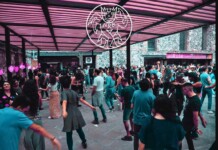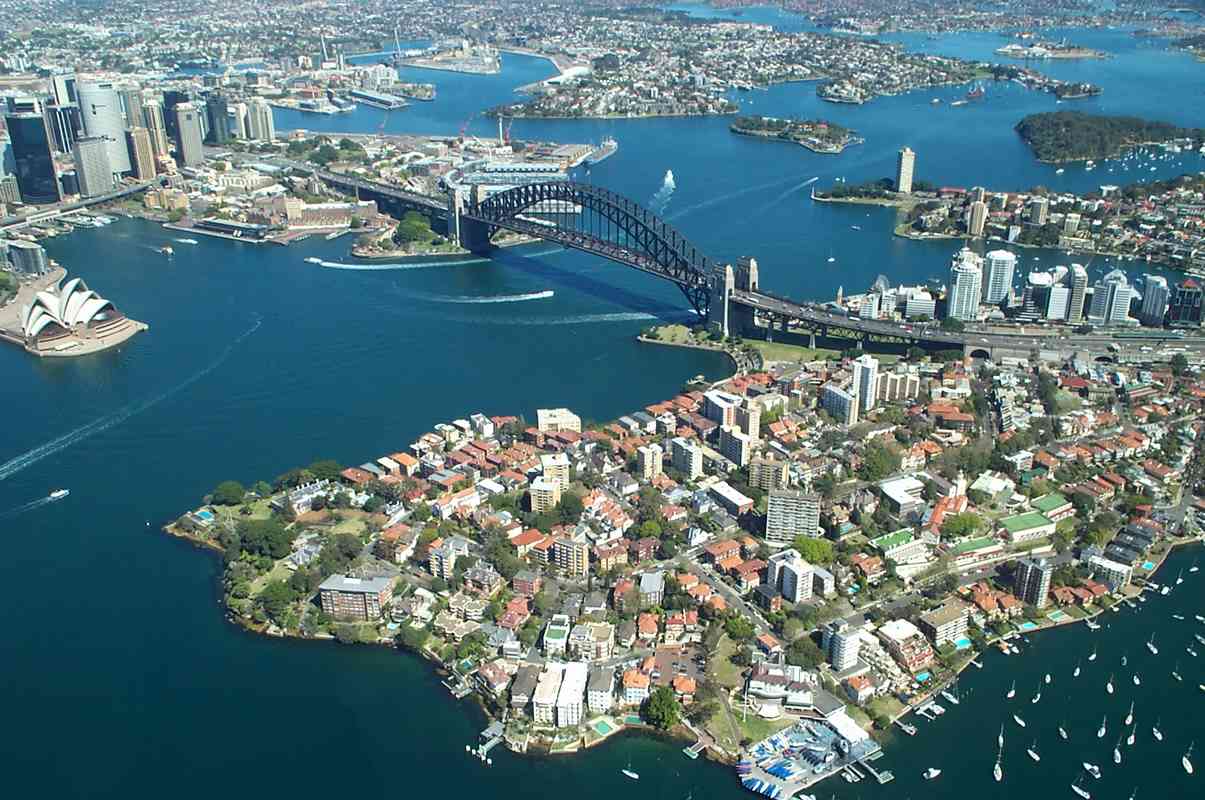93 years ago today, the Sydney Harbour Bridge opened in Australia. Spanning Sydney Harbor from the central business district (CBD) to the North Shore, the bridge is lovingly referred to as “the Coathanger” because of its single, shapely arch. The bridge was designed and built by British firm Dorman Long of Middlesbrough and is still today the tallest steel-arch bridge in the world, measuring 440 feet from top to water level. READ about some interesting construction details… (1932)
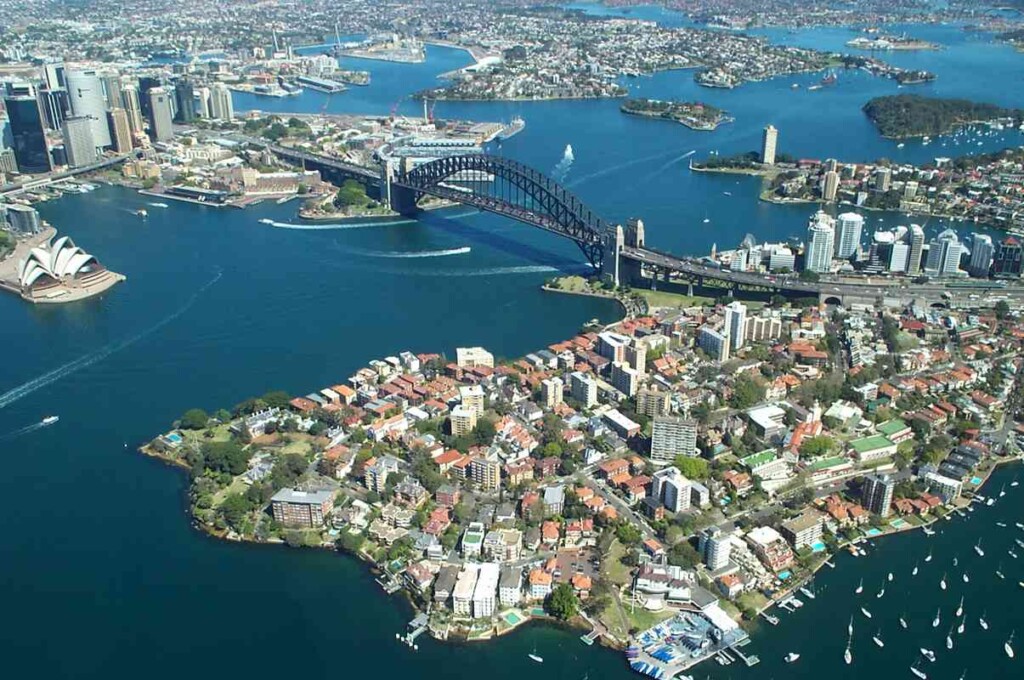
The total weight of the steelwork is 52,000 metric tons, and the arch itself is 39,000 of them. 79% of the steel was made and imported from England, but the bridge is held together by six million Australian-made rivets supplied by the McPherson company of Melbourne.
Heated until they were red hot and then driven into the plates with a pneumatic gun, riveting bridges was still the only sure-fire method of connecting pieces at this time. Welding was not yet proven on this scale.
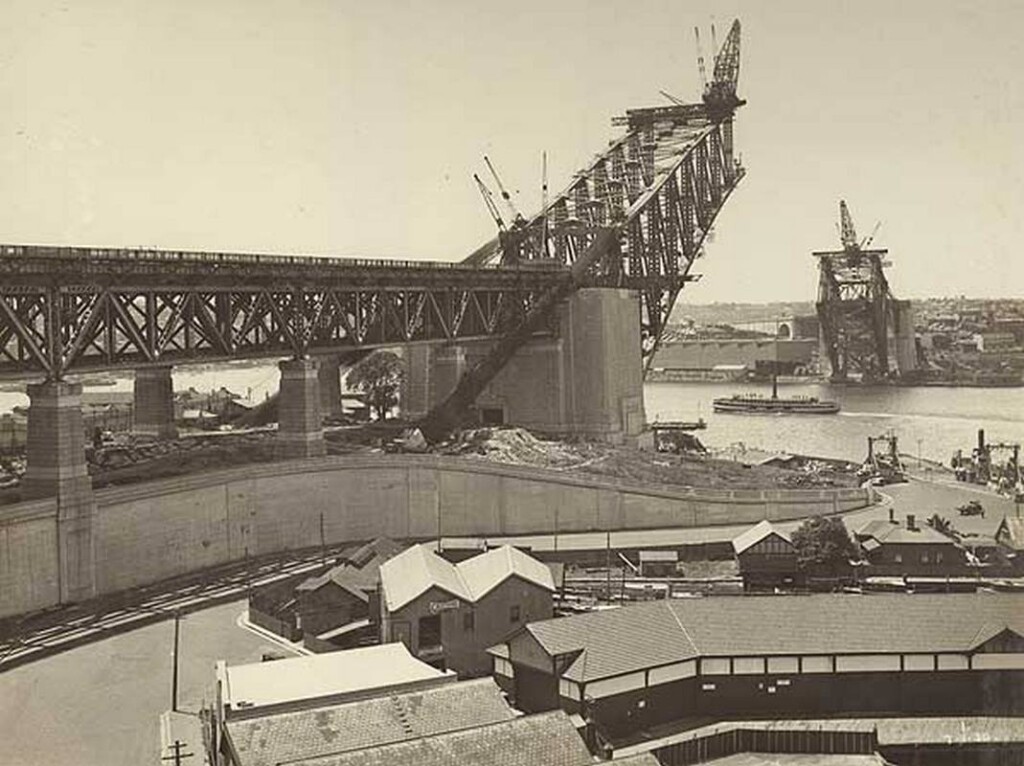
Arch construction itself began on 26 October 1928. The southern end of the bridge was worked on ahead of the northern end, to detect any errors and to help with alignment. The cranes would “creep” along the arches as they were constructed, eventually meeting up in the middle. In less than two years, on 19 August 1930, the two halves of the arch touched for the first time. Workers riveted both the top and bottom sections of the arch together, and the arch became self-supporting, allowing the support cables to be removed
The bridge itself was regarded as a triumph over Depression times, earning the nickname “the Iron Lung”, as it kept many Depression-era workers employed. In 2010, the average daily traffic included 204 trains, 160,435 vehicles, and 1650 bicycles.
MORE Good News on this Date:
- The Supreme Court upheld the eight-hour work day for railroads (1917)
- Bob Dylan’s debut album was released – Bob Dylan (1962)
- India and Bangladesh signed a friendship treaty (1972)
- Crowds cheered as the leaders of West and East Germany met for the first time since their country was divided – Willy Brandt and Willi Stoph (1970)
- The first free elections in 50 years lifted Latvia‘s political opposition (1990)
- The World Congress of Imams and Rabbis for Peace convened for the second time [see below] (2006)
143 years ago today, the first stone was laid in the Sagrada Familia Basilica in Barcelona, Spain. This history column celebrates this moment rather than the completion because famously the basilica is unfinished. Towering over the Eixample district of Barcelona’s incredible uniformity of building height, the Sagrada Familia is the world’s largest unfinished Catholic church, and when architect Antoni Gaudí died in 1926, the church was only around 15% complete.
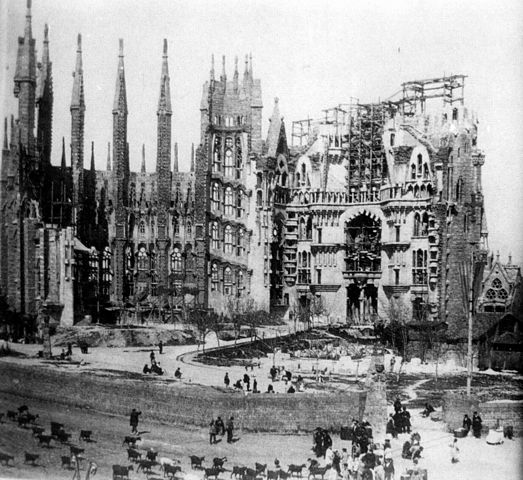
Relying solely on private donations, the Sagrada Família’s construction progressed slowly and was interrupted by the Spanish Civil War. In July 1936, anarchists from the FAI set fire to the crypt and broke their way into the workshop, partially destroying Gaudí’s original plans.
In 1939, Francesc de Paula Quintana took over site management, which was able to go on due to the material that was saved from Gaudí’s workshop and that was reconstructed from published plans and photographs. Construction resumed to intermittent progress in the 1950s. Advancements in technologies such as computer-aided design and computerized numerical control (CNC) have since enabled faster progress and construction passed the midpoint in 2010.
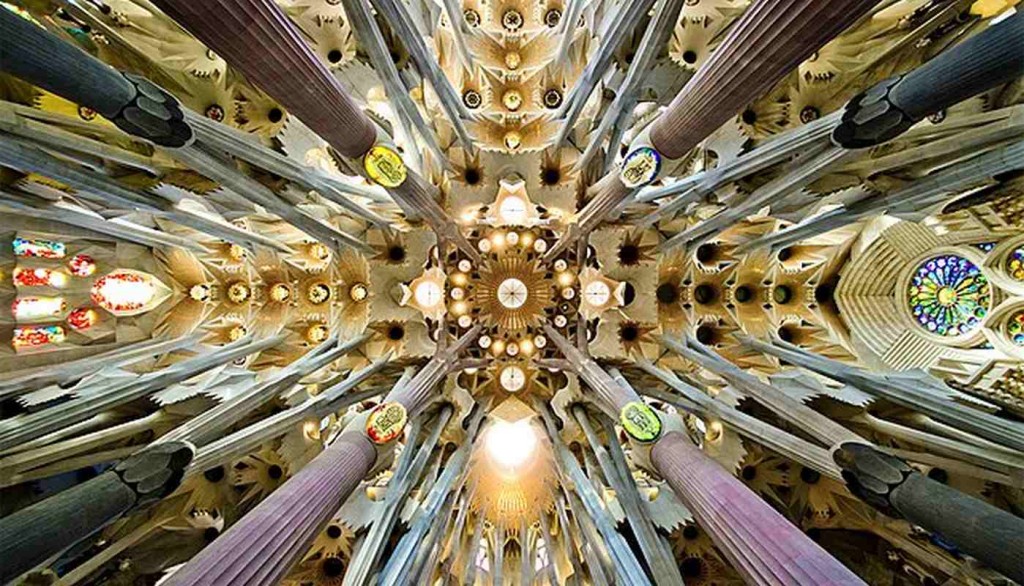
However, some of the project’s greatest challenges remain, including the construction of ten more spires, each symbolizing an important Biblical figure in the New Testament. It was anticipated that the building would be completed by 2026, the centenary of Gaudí’s death.
It has been described by art critics as probably the most extraordinary personal interpretation of Gothic architecture ever conceived. (1882)
4 years ago, Fagradalsfjall, “fair dale,” a volcano in Iceland began erupting during COVID-19 lockdowns, drawing tens of thousands of tourists to see the free-flowing lava, which due to the extremely unique placement of the volcano at the bottom of a valley and the complete lack of toxic gas, ash, and pumice, made it almost entirely safe to see.
Word spread so fast over social media, that the event turned into something like a music festival, or a giant campfire. It was a totally Democratic volcanic eruption, as Iceland’s “right to wander” laws prohibited search and rescue authorities from doing any more than monitoring the presence of sulfur gases and warning onlookers when they became too high.
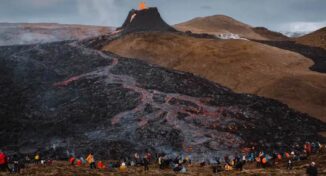
Volcanos are incredibly destructive, and the chance to just sit in a camping chair and watch one erupt is not only extremely rare, it’s essentially impossible to predict. Icelandic authorities had monitored 50,000 tremors leading up to the eruption, and they were preparing for a major event, evacuations, and more. But instead, it turned into something completely different.
“There was a lot of people sort of looking into the birth of our planet, or the creation of land, because literally land is being created right in front of you; new land,” says Frank Nieuwenhuis, a photographer interviewed by GNN last year. “And this whole country’s been shaped by the lava, so right in front of us this country is being created and shaped even more.”
“People were calling it almost like a performance,” Donal Boyd chimes in, another photographer and documentarian. “Like you go to see some sort of festival and you’re all there together and you’re connecting to it and you’re like ‘oh yeah did you go to that festival?’” WATCH Volcano for the People, a documentary about the human spirit of togetherness… (2021)
84 years ago today, the Tuskegee Airmen, an elite African American unit of the US Army, was activated—the first military branch to welcome Black pilots.
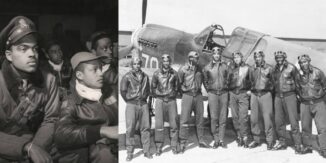
After two years of training, the Tuskegee Airmen, dubbed the ‘Red-Tail Angels’, were sent to Europe and proved their mettle as accomplished battle pilots in World War II.
The group also included the navigators, bombardiers, mechanics, instructors, and support personnel for the top-notch pilots. WATCH an inspiring clip—and see books, DVDs and memorabilia on Amazon… (1941)
19 years ago today, the Second World Congress of Imams and Rabbis for Peace took place with 150 Jewish Rabbis and Muslim Imams aiming for Islam and Judaism to become instruments of peace.
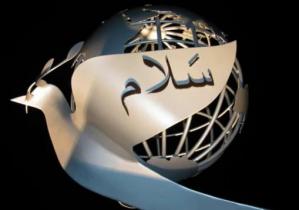 The goals of the first meeting in 2005 included 1) condemning violence perpetrated in the name of religion 2) the creation of a dialogue and partnership between the two religions 3) facilitation of the development of peaceful solutions to conflict by influential religious leaders 4) a gathering of these leaders before the media to promote a message of peace. The second meeting, on this date, was focused on building the trust and confidence necessary for joint projects, creating a forum for religious leaders to use their influence in conflict resolution, help religious leaders to challenge the misuse of religion in fanaticism, and to create structures to facilitate practical day to day work in prioritized areas. (2006)
The goals of the first meeting in 2005 included 1) condemning violence perpetrated in the name of religion 2) the creation of a dialogue and partnership between the two religions 3) facilitation of the development of peaceful solutions to conflict by influential religious leaders 4) a gathering of these leaders before the media to promote a message of peace. The second meeting, on this date, was focused on building the trust and confidence necessary for joint projects, creating a forum for religious leaders to use their influence in conflict resolution, help religious leaders to challenge the misuse of religion in fanaticism, and to create structures to facilitate practical day to day work in prioritized areas. (2006)
Also, 46 years ago today, C-SPAN debuted as its own cable channel as a public service providing unfiltered, gavel-to-gavel coverage of the United States House of Representatives on Capitol Hill.
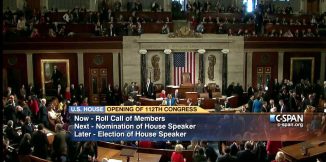
The channel also included nonpartisan coverage of Congressional hearings, White House press conferences and other news events—all supported and paid for by the US cable and satellite TV industry. Brian Lamb, C-SPAN’s chairman and former chief executive officer, first conceived the concept of C-SPAN (which stands for Cable-Satellite Public Affairs Network) in 1975, while working as the Washington, DC bureau chief of the cable industry trade magazine Cablevision. (1979)
Happy Birthday to Bruce Willis who turns 70 today. He overcame a stuttering issue by joining the drama club in a New Jersey high school, and eventually became its student council president. While attending Montclair State University, he worked as a private investigator and security guard—but Willis returned to acting, before quitting college and moving to New York.
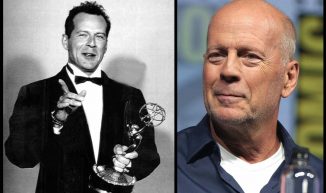
His big break came after he auditioned for a television series, beating out 3,000 actors to end up in the starring role of a charming detective, opposite Cybill Shepherd, in the comedy-drama Moonlighting. It ran for five seasons and won him the first of two Emmy Awards for Outstanding Lead Actor.
It also earned him a role in the 1988 film Die Hard as John McClane, which catapulted him to Hollywood star and action-hero status. He performed most of his own stunts in the film that grossed $138 million worldwide—and led to a 5-film series that smashed box office records earning a combined $1.4 billion worldwide.
After Armageddon in 1998, Willis showed his softer side by starring in the hugely successful M. Night Shyamalan film, The Sixth Sense. Other memorable Willis films in recent years include RED, and Moonrise Kingdom. In 2003, Willis visited Iraq as part of the USO tour, singing to the troops with his band, The Accelerators, and he made his Broadway debut in 2015 in Misery. WATCH the top 10 Willis clips… (1955)
SHARE the Memories, Milestones, and Music…





